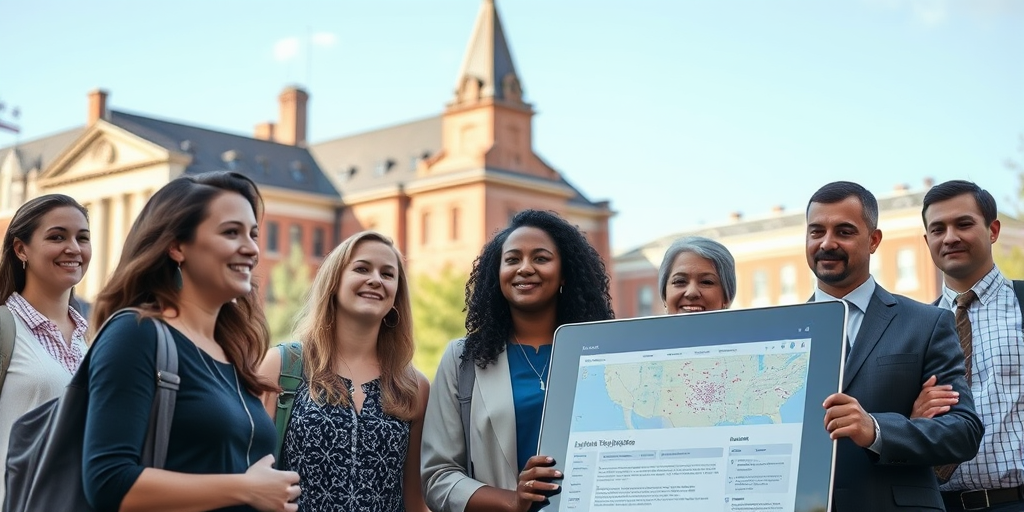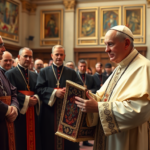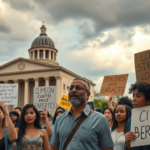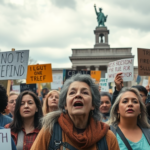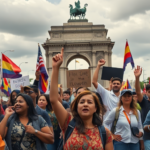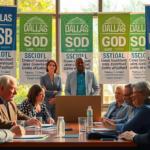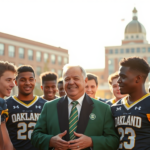Interactive Website Maps Religious Diversity Across Mississippi
In an endeavor that aims to transform the perception of Mississippi’s spiritual landscape, the University of Mississippi has launched an innovative interactive website. The Religious Diversity in Mississippi project, helmed by Professor Mary Thurlkill, is designed to map the state’s myriad faith communities through an engaging online platform. By utilizing historical research, video interviews, and sacred music, the project intends to serve educators, policymakers, and residents seeking new places of worship, offering a fresh lens through which to view the cultural richness of the state.
A Collaborative University Effort
The initiative is a testament to academic collaboration and community engagement. Developed with technical support from Adam Clemons, an assistant professor at the J.D. Williams Library, the project received funding from the William Hal Furr endowment. Thurlkill’s interdisciplinary approach shines through with a cohort of five students spanning history, music, and religious studies, who bring diverse perspectives to the project. “This project is a valuable resource for understanding our community’s religious dynamics,” Thurlkill explained. “I hope it becomes a cornerstone for public discourse and educational purposes.”
The website’s first featured site, Magnolia Grove Monastery in Batesville, illustrates the creative blend of tradition and modernity that characterizes many spiritual spaces. The monastery’s collaboration with rap artists, alongside its diverse musical traditions, underscores the cultural fusion that makes Mississippi’s religious identity unique.
Local Impact and Community Interest
The introduction of the Religious Diversity in Mississippi website holds significant implications for the state’s residents. By providing a centralized repository of information about varied spiritual practices, the project empowers individuals to explore religious sites that reflect their values and interests. Bryce Ledet, a senior music major involved in the project, expressed his excitement about the educational impact. “Our state’s culture is made by so many different cultures colliding together. Through this project, we document these rich histories and reveal a part of Mississippi many might not see,” Ledet noted.
For local policymakers and educators, the website offers a practical tool. Thurlkill envisions it as a resource for public school teachers and legislators, enhancing their understanding of the cultural constituencies they serve. “For politicians to be able to look at the county and the districts they represent and see how diverse their population is can have major implications for how they legislate,” Thurlkill pointed out.
A Tradition of Religious Exploration
Mississippi’s religious tapestry has historically been dominated by Protestant Christianity, but the state harbors a deeper, often underrepresented diversity. Projects like Religious Diversity in Mississippi serve as contemporary harbingers of change, showcasing traditions beyond the dominant narratives. The state’s religious history is as complex as its social fabric, with communities that have long coexisted yet remained undocumented in mainstream narratives.
Future Prospects and Community Engagement
Looking ahead, Thurlkill aims to expand the project by collaborating with other universities across Mississippi. By fostering statewide academic partnerships, the project seeks a broader representation of Mississippi’s diverse religious identities. “Collaborating with other universities could enable us to chronicle more sites, like the Second Baptist Church in Oxford, and push past the predominantly Protestant narrative,” said Thurlkill.
This vision anticipates a future where Mississippi’s cultural diversity is fully documented and appreciated, offering a narrative shift that aligns with contemporary values of inclusivity and representation.
Balancing Perspectives
While the project is largely seen as a positive development, it does invite scrutiny regarding its comprehensive coverage and balance. Critics might argue that focusing on religious diversity requires a nuanced view that considers varying degrees of community visibility and inclusion. As such, the project encourages ongoing feedback and invites community stakeholders to provide input to ensure balanced representation.
Local Resources and Getting Involved
Residents interested in engaging with or learning from the Religious Diversity in Mississippi project are encouraged to visit the website, attend university-hosted forums, and contribute knowledge of local religious sites. This initiative serves not only as an educational tool but also as a living document welcoming additions and community participation.
In conclusion, the Religious Diversity in Mississippi project emphasizes the local impact of cultural inclusivity, offering residents a dynamic tool to explore the multifaceted religious identity of their state. It exemplifies a broader trend toward embracing diversity within traditional frameworks, ensuring that Mississippi’s future heritage is as inclusive as its modern reality.

